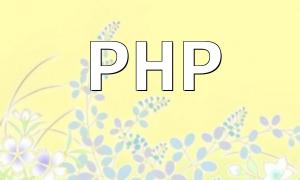In modern web development, PHP is a mainstream programming language, and maintaining clean and standardized code is crucial. This article shares practical methods to optimize PHP code formatting in Eclipse, helping developers improve code quality and development efficiency.
Proper code formatting not only improves team collaboration efficiency but also reduces errors. A clear code structure makes it easier for developers to understand and maintain projects, so mastering PHP code formatting techniques in Eclipse is essential.
Eclipse, as a powerful integrated development environment, has a built-in automatic formatting feature. When properly configured, it helps developers maintain consistent coding style and reduces the hassle of manual adjustments.
First, you need to access Eclipse's preferences settings by following these steps:
Open Eclipse and click the “Window” menu.
Select the “Preferences” option.
Expand “PHP” > “Code Style” > “Formatter”.Within the Formatter settings, you can create and customize formatting rules to meet the needs of different projects. The steps include:
Click the “New” button to create a new formatting profile.
Adjust various formatting options like indentation and alignment.
Save the profile and apply it to the current project.Besides automatic formatting, you can manually format selected PHP code blocks. The process involves:
Select the code block.
Right-click and choose “Format”.
Alternatively, use the shortcut keys: Ctrl + Shift + F on Windows or Cmd + Shift + F on Mac.While formatting code, adhering to popular coding standards such as PSR-1 and PSR-2 further enhances code quality. Eclipse's formatter supports these standards, helping ensure your code meets industry requirements.
Mastering both automatic and manual PHP code formatting techniques in Eclipse, combined with following coding style guidelines, effectively improves code cleanliness and maintainability. Properly utilizing these methods will bring higher efficiency and fewer errors to your development process.









